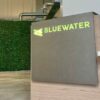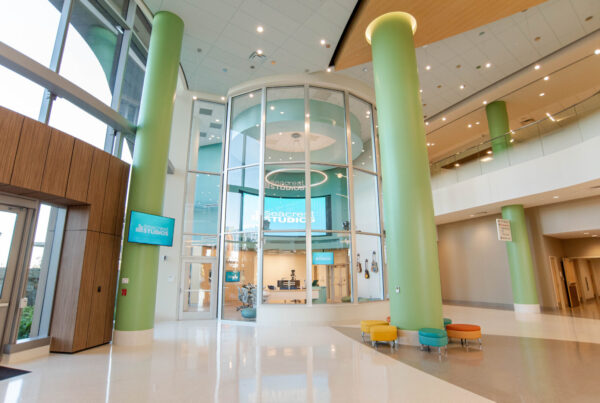Do you want to boost employee engagement? The answer to doing so successfully might just reside in the space that employees spend the majority of their days; the office. The modern workplace is more than just a place to conduct business. It’s become a community where shared experiences and technology do everything from drive day-to-day operations to creating a desirable culture where talent flocks and wants to stay long-term. Cultivating a modern workplace that enables people to work efficiently and draws people in with a compelling aura is critical for companies looking to improve recruitment and employee engagement; not to mention production. Happy employees that produce at an extremely high level with a sense of continual innovation are the core of most successful organizations.
Consider the average lifespan of an S&P 500 company. Today, it’s around 20 years. That’s down from nearly 60 years in the 1950s. Why? Innovation is creating new businesses while toppling others. Never before has Blue Ocean Strategy been so present in corporate culture. This type of strategy aims not simply to innovate an existing business, product, or service, but rather to find an entirely new space to compete void of competition. The only way to do this is to innovate fast, deliberately, and with great corporate conviction. Connectivity is the driving force behind this type of innovation; top talent has to move at lightning speeds to collaborate, create, and ultimately innovate. Furthermore, that talent is in high demand — and not just from other employers.
These days, highly skilled workers are able to do very well freelancing. Recent studies show that the number of high-earning freelancers (those making $100,000 or more per year) has risen from 12.5 percent in 2011 to 20.9 percent in 2018. Between the lure of going independent and the ability to shop around for employers, it’s no surprise that workers’ expectations for office amenities have changed. If you haven’t realized this yet and begun to address it, you’re already behind.

The State of the Workplace
Features that once set many businesses apart — such as connectivity, high-speed internet, laptops, and the ability to BYOD — are fairly standard today. In fact, the workplace itself is being used as a tool to attract and retain talent, as well as improve sales. Given a choice between a tech-enabled, highly flexible office environment or a run-of-the-mill office space complete with cord-riddled conference rooms and endless cube farms, it’s easy to guess which option people are more attracted to. This is becoming increasingly true across nearly all levels and ages within the workplace. No longer is it strictly millenials driving the modern workplace discussion.
That’s why more businesses are adopting technology-forward design for space planning. For example, some companies are developing fully connected huddle spaces — nontraditional areas, not necessarily in rooms, where employees can meet and work together. Other companies have recognized the importance of consistent technology deployment throughout a facility for ease of use. Employees can easily expand a laptop-based videoconference into a physical space or use a digital whiteboard to allow co-workers or clients from around the world to annotate documents in real time.
Wabco Holdings recently opened a new facility in Auburn Hills, Michigan, that features an open environment to foster collaboration and innovation and utilizes augmented reality to simplify Wabco’s training. Employees can examine the internal components of the company’s products to better familiarize themselves with the systems. The facility’s innovative technology will give employees a great place to work, which in turn helps them better serve their customers.
Other companies are taking tech adoption even further by combining it with art to create beautiful and interactive media elements that are integrated into a building’s architecture. It’s a means of bringing the facility itself to life, creating a place that employees are happy to enter every day and providing a platform for a next-generation customer journey. The District Preview Center in Detroit, for example, used animated 3D models of the development site to create a fully immersive interactive experience for potential investors and the media.

Modernizing the Workplace to Boost Employee Engagement
Of course, not every company can build animated 3D models or afford to augment its staff’s reality. But there are plenty of other options available, and the following are good places to start:
1. Wireless collaboration
Wireless collaboration gives employees flexibility in how and where they work, meaning they aren’t stuck in boring conference rooms all day. Every space, regardless of its location, can be used to work and meet. The ability for today’s workforce to present remotely, or wirelessly in a huddle room, or even a large conference room with their peers is essential to streamlining communication. Today’s workforce expects to flawlessly be able to communicate both in-person and across the globe. Having an office that lacks the ability for wireless collaboration is a roadblock when it comes to creating an organizational culture that strives for market dominance. Bluewater would be happy to discuss wireless collaboration options for your workplace. Simply inquire here and we’ll be happy to show you some of the options available.
2. Architecturally integrated media
Integrating media into a building’s architecture gives the space a life of its own. It can transform an everyday office building into a destination experience. Consider for a second what an entire wall of LED panels could do to welcome people into a building. It would offer your company a canvas for interactive art or signage, creating a unique experience for employees and guests alike. Or take a cue from The Rijksmuseum in Amsterdam, which installed “Shylight,” a cluster of kinetic light fixtures designed by Studio Drift that billow as people walk near the installation. These are perfect ways to make sure that you impress that CEO that enters your lobby on his way to a vitally important meeting. It also makes your current employees feel that you’re willing to invest in technology and innovation.
3. Personalization
A few years ago, running a custom content loop display in your lobby may have been impressive. Today, that’s increasingly easy to tune out. It’s more difficult to ignore when the content is changing in real-time based on environmental factors, like the weather, traffic, or time of day. And it’s still more difficult to ignore when the content is personalized. Consider pulling visitor names from meeting invites to appear on lobby signage around the time of their visit. It’s a very small way to surprise and delight your clientele. Personalization is taking over our everyday lives, and thus should become a focal point of the modern office. We see it in our web shopping experiences, our social media feeds, and even the way in which we decide what foods we want to eat. Our world is becoming much less “mass” and much more “1-1” Think of your smart speaker in-home that accurately predicts the type of music you enjoy, or want to listen to at certain points of the day. We are growing increasingly accustomed to this type of experience. When we as humans are immersed in personalized experiences we feel empowered and that’s exactly what employees can feel in the modern workplace.
Integrating Tech Into Your Modern Workplace
If you want to modernize your workplace and deliver more experiential moments to those who enter your doors, create a plan of attack. After all, some of these elements can carry a substantial price tag, so you’ll want to start by determining the reason for implementing any one solution. Is it to attract talent, improve sales, or retain employees by creating a sense of community? Knowing the intended effect is key to executing your plan.
You’ll also want to research what others are doing with technology and find concepts that resonate with your brand and goals. Then, gather a group of experts — architects, agencies, designers, technology firms, etc. — to help navigate everything from selection and integration to deployment. Once you’ve got your bases covered, there’s no limit to what these changes can do for your business.
Originally published by CEO World Modified by Bluewater on April 23, 2019












One Comment